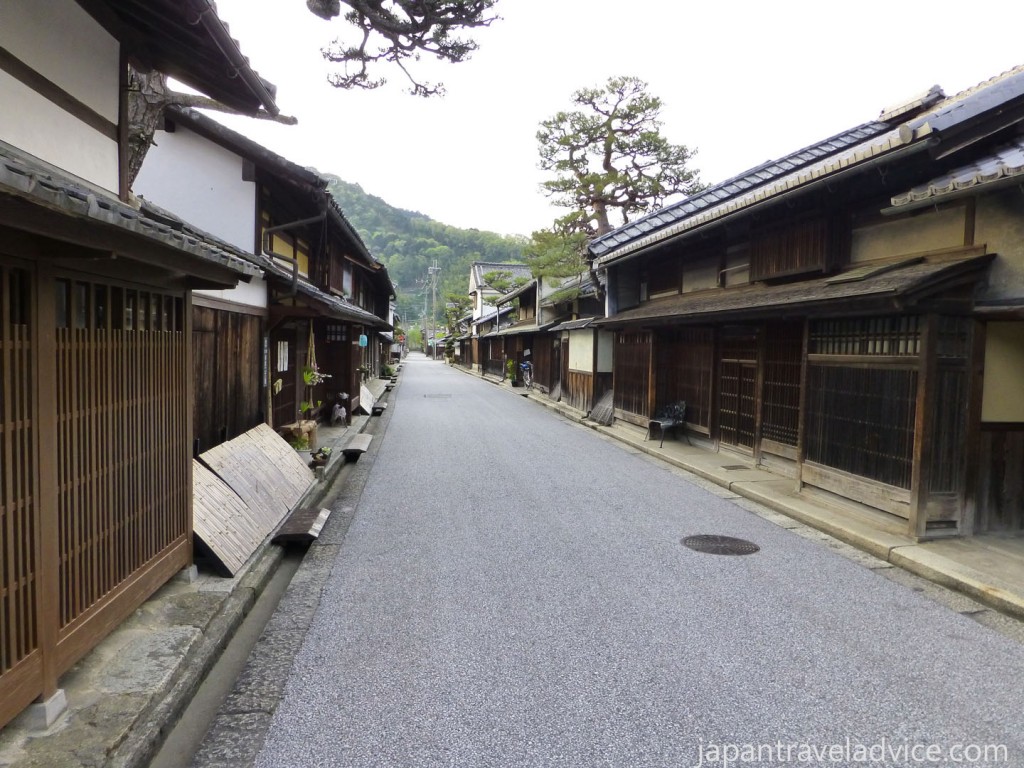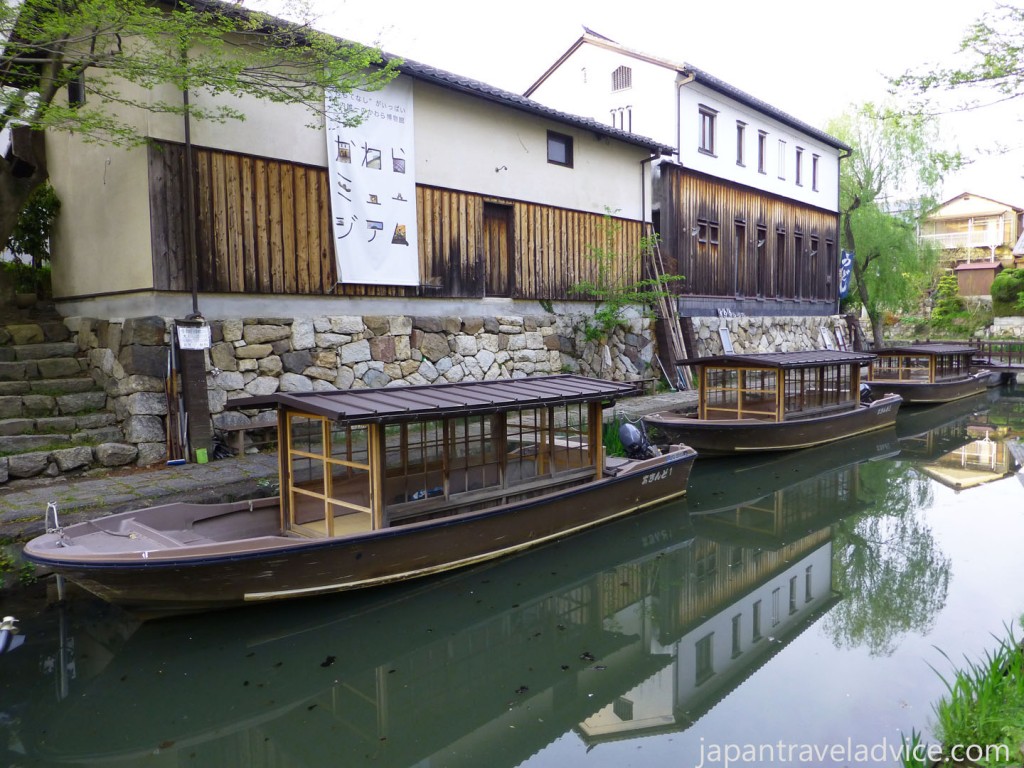
Omihachiman
Omihachiman is an Edo Period town located close to Lake Biwa in Shiga Prefecture, and home to the famous Omi Merchants. The castle town of Omihachiman was built by Toyotomi Hidetsugu in 1585 when he built Hachiman Castle. The town became a hub of craftsman and merchants and was one of the post towns of the Nakasendo Road. Omihachiman is located about 30 minutes by train from Kyoto. Most of the main sights can be visited in a full day with Himure Hachimangu Shrine, Mount Hachiman, Shin Machi Dori, and Hachiman Bori Canal all close together and can easily be reached on foot. Chomeiji Temple and Azuchi Castle are further out from the centre of town and require access via car or bus.
Places of Interest
Himure Hachimangu Shrine
The largest shrine in Omihachiman, located at the foot of Mount Hachiman. The Emperor Ichijo ordered the shrine be built on top of Mount Hachiman as well as at the foot of the mountain in 991. Later, the shrine moved to its present location in order to build a castle on top of the mountain. Tokugawa Ieyasu also worshiped at this shrine. Today, the Sagicho Fire Festival is held here every March. The festival was originally started by Oda Nobunaga when he was in Azuchi. Entry to the shrine is free and parking is readily available.

Mount Hachiman
A famous mountain in Omihachiman that was once the home of Hachiman Castle. The castle was built by Toyotomi Hidetsugu, son of Toyotomi Hideyoshi in 1585. Today, all that remains of the castle are ruins including some of its stone walls. Although the castle had a short history the castle town that was established at the foot of the mountain flourished. The Hachiman Yama Ropeway operates services between the Himure Hachimangi Shrine and mountaintop. It takes about 4 minutes to reach the top of the mountain and it offers stunning views over Lake Biwa and the surrounding area. The ropeway costs 800 yen (return).

Shin Machi Dori
The former merchant’s area has well preserved Edo Period houses and is open to the public. This area was famous for its Omi shonin or Omi merchants. It was also the former residence of a wealthy merchant family, the Nishikawas. This quaint street features beautiful buildings with lattice windows, pine trees protruding from gardens of private residence, and “udatsu” (unusual shaped roof). It is very magical in the evening when the natural light starts to dim and the old fashioned street lights come on.

Hachiman Bori Canal
Located close to Shin Machi Dori the canal area was once the hub of ship transport in the area. The canal acted as a moat around the base of Mount Hachiman and through the castle town. It is also connected to Lake Biwa and acted as transport for the merchants in the area, and the cargo boats sailing across the lake. It has some beautiful scenery with white walled storehouses and old merchant houses along the canal. The houses continue to the torii gate of Himure Hachimangu Shrine and the Hakuun Bridge. It is full of history and atmosphere.

Chomeiji Temple
Chomeiji Temple is the 31st Temple of the Saigoku 33 Temple Pilgrimage of Western Japan. The path up to the temple includes 808 stone steps and is very atmospheric as it is lined with trees. It takes about 20 minutes to reach the temple from the base of the mountain on foot, and it is also accessible via car. The temple contains a main hall and a three storied pagoda. It is free to roam the temple grounds and enjoy it’s beautiful buildings and soak up its atmosphere. You can even enter the Bell Tower and soak up the amazing views of Lake Biwa and the surrounding area from the temple.

Azuchi Castle
Azuchi Castle was one of the main castles of Oda Nobunaga, a samurai warlord and was built in 1576 in Omi Province. It was purposely built in this location as it was close enough to Kyoto to protect and guard the approaches to the capital. It also offered strategic control over the key Tokaida and Nakasendo roads to Kyoto. The design of Azuchi Castle was revolutionary in its day and lead to a new more grand type of castle being built in Japan. The main keep was 7 stories high and is said to have been the largest multi-storied wooden building in the world at the time. Today all that remains are the castle ruins, but they have done a great job in excavating the ruins and rebuilding the numerous stone walls. There is so much to see and the extent of the ruins is so vast that I would highly recommend this place to any Japanese castle fan.


